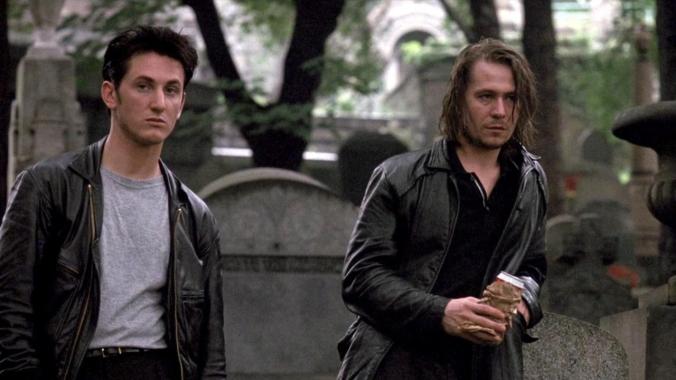The following article discusses story details of Rambo: Last Blood.
In the lead-up to Creed (2015), the New Yorker published a fascinating analysis of the six Rocky movies, arguing that they can be viewed as a trilogy: In Rocky (1976) and Rocky II (1979), the Italian Stallion goes from nobody to somebody; in III (1982) and IV (1985), he mutates once again, this time from hero to superhero; Sylvester Stallone then sought to extricate the champ from the excesses of Reagan’s America (the robot butler, anyone?), setting up Rocky’s ignoble return to the streets of Philly in Rocky V (1990), then credibly reestablishing him as an underdog in Rocky Balboa (2006). It was this iteration of Rocky—the purest version—that Stallone reprised in Creed and Creed II (2018), in which an aging, widowed, streetwise Rocky acts (reluctantly at first) as mentor and trainer to a young protégé.

Sly’s other signature role, troubled Vietnam vet John Rambo, has had no less of a winding road through the past five decades when it comes to his ever-evolving characterization: The self-hating solider of David Morrell’s 1972 novel First Blood was recast as a sympathetic hero in the 1982 movie of the same name, who in turn became the jingoistic superhero of Rambo: First Blood, Part II (1985) and Rambo III (1988). It was only in his belated fourth cinematic adventure, Rambo (2008), that his prototypal literary temperament atavistically asserted itself:
You know what you are, what you’re made of. War is in your blood. Don’t fight it. You didn’t kill for your country—you killed for yourself. God’s never gonna make that go away. When you’re pushed, killing’s as easy as breathing.
Rambo’s inner monologue in Rambo (2008)
Upon ending the prolonged moratorium on both creatively depleted franchises in the aughts, Stallone didn’t “retcon” some of the lesser entries in the Rocky and Rambo series, but rather embraced them as part of both heroes’ long emotional arcs: Just as Creed II redeems the hokey jingoism of Rocky IV, Rambo IV acknowledges that the previous sequels glorified violence—gleefully, even pornographically—and burdens the protagonist with the guilt of that indefensible carnage, refusing to let him off the hook for it. The inconvenient mistakes of the past aren’t expunged from the hagiographies of either of these American icons for the sake of a cleaner narrative—an increasingly common (and inexcusably lazy) practice in franchise filmmaking, as evidenced by recent “do-over” sequels to Terminator and Halloween—but instead seed the conditions in which we find both Rocky and Rambo at the next stage of their ongoing sagas.
So, in Rambo: Last Blood (2019), which sees the itinerant commando back home at his ranch in Arizona (per the coda of the last movie), the big question I had going into the film was this: Which permutation of Rambo would we find in this story—the one about what happened after Johnny came marching home? What might Rambo, who has always served a cultural Rorschach—first as an expression of the political disillusionment of the seventies, then recruited in the eighties to serve as poster boy for the Reagan Doctrine—tell us about ourselves in the Trump era?
Continue reading









Recent Comments